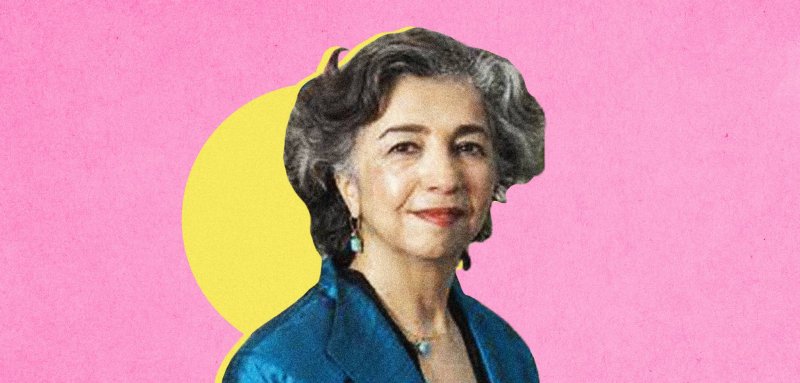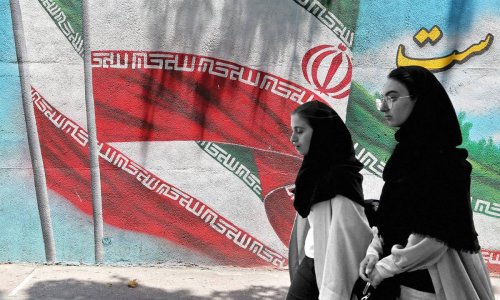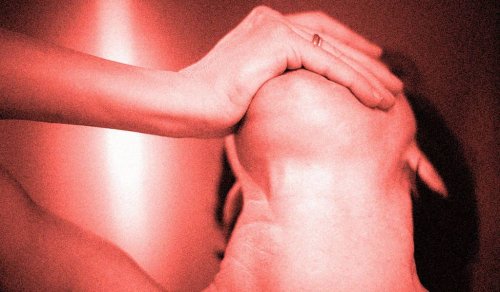“Women need to get involved in the act of decision-making; decisions that affect our lives”. In this spirit, and led by a true conviction in her own statement, professor Shahla Haeri asked her class of female students, she tells Raseef22 during a phone interview, to venture into an experiment, that is adopting the role of of one of the Muslim queens and sovereigns, knowing details about her life and taking up her responsibilities.
A former director of the Women’s Studies Program at Boston University, Shahla Haeri is one of the pioneers of Iranian Anthropology, and has produced cutting-edge ethnographies of Iran, Pakistan and the Muslim world. Her landmark books include her classic ethnography, Law of Desire: Temporary Marriage, Mut’a, in Iran (1989/2014) translated into Arabic and reprinted frequently, highlighting the tenacious but secretive custom of temporary marriage in Iran; No Shame for the Sun: Lives of Professional Pakistani Women (2002/2004), widens the ethnographic scope to make visible lives of educated and professional Muslim women.
Dr. Haeri’s academic and creative oeuvre include directing a video documentary, Mrs. President: Women and Political Leadership in Iran (2002, 46 min.) focusing on six women presidential contenders during the Iranian presidential election of 2001. She is the recipient of many fellowships, grants, and postdoctoral fellowships.
Her recently published book, The Unforgettable Queens of Islam: Succession, Authority, Gender (Cambridge University Press) is a groundbreaking book on the extraordinary lives and legacies of a few remarkable Muslim women sovereigns from across cultures and Islamic history.
In this article, we interview Shahla Haeri to discuss her recent work, her previously published books, and her experience as an anthropologist concerned with the lives and status of Muslim women around the world.
Queens of Islam
The Unforgettable Queens of Islam (2020) is a book about Muslim women rulers, women who were mentioned in Quranic revelations like Queen of Sheba, her mighty throne, brilliant diplomacy and successful peace-making initiatives; women who were military/political leaders like ‘A’isha, the wife of Prophet Muhammad; women who have contested rules of dynastic succession in medieval Yemen like Queen Arwa, and in India like Razia Sultan, and those who stood for election in modern Pakistan like Benazir Bhutto and in Indonesia like Megawati Sukarnoputri.
What do you want your readers to know about women and power?
First, I want my readers, whether Muslim or non-Muslim but particularly Muslims, to know about this history. It is very important for us to know our own background. Women have always had power– but often from behind the scene. It is important for women, some women, to have a seat at the political table: That’s where decisions are made: political, legal, religious, economic, etc.
In The Unforgettable Queens of Islam, Shahla Haeri highlights the history of women in power, which has been ignored for long, to build awareness of that history, and set role models for Muslim Women
Such decision-making powers have been monopolized by men. Given the history of male leadership, knowing the patriarchal history of that has governed our societies, my hope is that more and more women can participate in decision making and hopefully inject more social caring and attention to the lives of the people under their care.
This history shows how the aspect of women power has been ignored for long now. How do you think bringing it to the light could open up new doors?
Well, I hope the first order of business would be awareness and understanding of our history. It is important for us as Muslim women to have role models, such as the leading women of early Islam, including Khadija, Aisha, Fatima and Zainab, none of whom shied away from taking action and being involved in the affairs of their community. Further, the historical Queens I have mentioned in my book – and many others like them – also provide great role models for us and their charisma and life stories would be inspiring for Muslims, and non-Muslims, hopefully.
The windows, if not the doors – have already been opened up, as a woman leader in President Khatami’s administration told me. A look at women’s movements in the Arab and Muslim world clearly points to that opening. Of course, we shouldn’t be under any illusion, that change and progress would be continuous and forward.
Many patriarchal regimes or elements and factions within it would be very resistant. But women should have the wisdom and intelligence to make common cause with many men – their immediate families or political and religious elite – to think of plans and programs that benefit the entire society: men, women, and children.
What was it like doing this kind of research? What was the writing process like, especially that it covers a long-time span and in different societies?
The research was very enriching, educational and exciting – and of course at times baffling. I was not focusing on one particular society or region. So, the research was more extensive and intensive. But I learned a lot and hope to be able to share my knowledge with my students and the general public.
This is why the writing process was very time consuming, precisely because it covered different societies at different periods in history and with different political systems. But the father-daughter relationship was almost constant in all of them. The dynastic tie provided the platform these charismatic women needed to launch their reach for power.
I started thinking about the subject in 2005 when I had a postdoc at the Women’s Studies in Religion Program at Harvard Divinity School, but the serious writing and rewriting started in late 2016 and continued till 2019.
In your lecture on the topic of women’s leadership in Islam (which was delivered in Georgetown University- Qatar in 2012), you stated that the patriarchal objection to women’s leadership comes from social and political contexts rather than a religious one. Could you explain?
My point is that unlike what many believe, religion is not the only patriarchal determinant of women’s political leadership. It is also – and sometimes more so- the political system that strives mightily to deprive women from participating in public domain and political activities. Religion and politics are mutually constitutive. But drawing my inspiration from Sophocles, we need a degree of delinking between religion and politics (governments). That is to allow people to maintain and practice their piety in private while at the same time function as citizens in the public domain.
Shahla Haeri: Unlike what many believe, religion is not the only patriarchal determinant of women’s political leadership. It is also the political system that strives mightily to deprive women from participating in public domain and political activities
The duty and function of the political elite is to govern and allow for a degree of personal/family autonomy and individual freedom. In other words, the function of a government – its job – is not or should not be the business of controlling people’s choices and way of life in the privacy of their home.
You used the religious text in your argument to advocate women’s rights into authority. What is the importance of this discourse?
Yes, it is important to see what the Quranic revelations – the highest source of authority and legitimacy for Muslims – say about women and sovereignty and leadership. That’s why the book begins with the amazing story of the Queen of Sheba.
Your documentary film gives the Iranian women, who decided to run for presidency in 2001, a chance to express themselves to show that they are indeed qualified for the position. How was it received, particularly among your female audience?
It was generally received well, particularly outside of Iran! I did not have a chance to show it in Iran, except once and that was under Mr. Khatami’s presidency and at a large gathering on the occasion of Forough Film Festival. Some Iranian women –and men too– dismissed these women’s efforts outright, and did not pay so much attention to their self-confidence. But kept repeating that where men could not do anything what can women do.
But for Americans and others outside of Iran, including its screening in Lahore, Pakistan, Delhi, India, it was educational and enlightening to actually see variations of veil worn by women. They also came to realize that just because women wear scarf, they do not lose their agency or their brains.
Muslim Professional Women in a New Lens
Six candid interviews introduce readers to a class of Muslim women rarely acknowledged in the West in No Shame for The Sun. The book aims to shed light on the status, conflicts and social realities of educated Muslim women in Pakistan. They tell of the conflicts and compromises with family and community, while facing violence, archaic marriage rules and locally entrenched codes of conduct. They speak of human dignity and gender equality, economic deprivation and social justice, and of feminism and fundamentalism.
In your previous book No Shame for the Sun you hoped to change the stereotyped image of the oppressed and passive veiled Muslim woman. Who was your audience? And has the book achieved what hoped it would?
Yes, when I wrote my book on professional Pakistani women, I was fed up by the meaningless and dominant colonial narrative of passive, inferior, agentic “Muslim women”. It was as if they did not see us as autonomous individuals, with all our cultural and historical difference and religious commonalities.
It did not matter whether talking about women from specific society, say Iran, at specific moment in history, with specific educational and class backgrounds. All Muslims women at all time were lumped together– “Muslim women”. Such perception, disseminated by the media and some “scholarly” books had, and still has, created such a pervasive image of Muslim women that was –and still is to some extent– hard to change but needed to be challenged.
In No Shame for The Sun, Haeri challenges the dominant colonial narrative of passive, inferior, agentic “Muslim women” to show that even if women were veiled, it did not mean they act as automatons according to some patriarchal norms
I wanted to highlight the similarities and differences between professional women in both the, so called, global north and south– in this case Pakistan. That, how professional Muslim women engage with their own families, societies and other structures of power to make their own lives and those of their families meaningful; that even if women wore a headscarf –or a veil- or were pious, it did not /does not mean they lose their brain or that they act as automatons according to some patriarchal norms.
When my Pakistan book was published in 2002 very few people –I mean scholars of the Muslim world- had started talking about professional women. Most of the topics were focused on “honor killing", “FGM,” the veil and similar topic. Almost nothing on the educated, professional, skilled and active women from the Muslim world.
This perspective and the line of research and argument was eventually picked up by others, and we see that by the second decade of the 21st century, educated, professional, Muslim women can no longer be ignored or forgotten –not by the west and not within their own countries. Of course, much hurdle is left to be overcome.
Law of Desire
Shahla Haeri: The fundamental problem with temporary marriage, is in the permissibility of polygyny, which gives license to men but restricts women
In Law of Desire: Temporary Marriage in Shi'i Iran, a fieldwork was conducted on mut’a, temporary marriage. Mut’a is legally sanctioned among the Twelver Shi’ites who live predominantly in Iran. The book describes the concept of a temporary-marriage contract, in which a man and an unmarried woman (virgin, widow, or divorcee) decide how long they want to stay married to each other (from one hour to ninety-nine years) and how much money is to be given to the temporary wife.
Law of Desire thus makes available previously untapped and undocumented data about an institution in which sexuality, morality, religious rules, secular laws, and cultural practices converge. Drawing on rich interviews, with women, men and religious figures readers come across contradictory views on temporary marriage.
While it was advocated by the majority of men, most women condemned its current legal and social status in Iran and found it demeaning for them. Some women (mostly widowed and divorced) considered these marriages as a source of income, other women were in favor of temporary marriage for the mere physical pleasure.
Do you believe that if the state arranged laws for temporary marriage which insured women’s rights as legal wives, it could be an acceptable form of marriage even if temporary and private?
I think the problem lies in the radical legal inequality between men and women. Men, married or not, are legally permitted to have as many temporary wives as they wish, justified – presumably on their “nature,” they can’t control themselves. Some may even argue that they shouldn’t be expected to! Women, on the other hand, cannot do so if they are married.
So, structurally and legally the fundamental problem is in the permissibility of polygyny, which gives license to men but restricts women. If both have the same right, and if marriage is between one man and one woman, then they can decide to marry “permanently” or “temporary,” one man and one woman at the time.
In Muslim countries, like Iran, Iraq and perhaps in Syria, where these marriages occur as more of a religious duty to restrain oneself from forbidden sexual intercourse or to sanction that intercourse in a verbal agreement, how does your anthropological study set the alarm of the social, physical and medical dangers of such institutions?
Well, hopefully, an ethnography such as mine can make people aware of the history, the practice and the law. That’s the first order of the business; to know what it is and what you are getting into. Second, I hope it brings out the contradictions and conflicts between what the law says and what people do; between the claim to the “divine” origin of the law, and the hypocritical piety of men who have arrogated themselves to interpret the law; and the shameful manipulation of it by some unscrupulous individuals.
Do you believe that the status of women has changed much since the publication of the book?
Much has changed but not necessarily forward and in the same direction, i.e., change among women and the state seem to have gone on opposite direction. Women, and many men, have become a lot more aware of the nature of the ideological regimes under which they live; the harsh unequal relationship between men and women within marriage and the structural limitations placed on married women.
For that matter, we see that divorce rate has gone up in Iran and age of first marriage has gone up, and its rate decreased. This is much to the chagrin of the states, who faced with such situations double down on their harsh policies to enforce certain ideology and to oblige people to obey. But many are no longer willing to put up with such large and small injustices and indignities. Many have rebelled by not marrying, or living with a member of the opposite sex, against the “moral” injunction of the state, hence, resulted in greater violence on women.
The Anthropologist, a queen of her own
Having lived in Iran and Pakistan for a while during your research, you said that you were considering the Middle East as a possible environment for research.
What in particular, makes the region an interesting field for an anthropologist? And what areas are of concern to you personally?
Good questions! To begin with these neighborhoods have been a maneuvering ground –a laboratory of sort- for the early anthropologist, sociologist and historians who “studied” these societies and claimed the “authority” on them on all aspects of these societies: gender, economy, politics, religion, etc.
So, we as educated members of societies on that part of the world need to re-do these studies, keep a critical stance, bring in a fresh look and a more intimate eye on these earlier studies to set the record straight and to offer new –and hopefully more accurate– views of these societies.
You have formerly worked as the director of the Women’s Studies Program at Boston University. What can you tell us about this experience?
It was very interesting, educational, and productive. I was the first director of the formally established women’s studies program at Boston University. I had to start from the scratch. With two full-time and one part-time instructors, an office assistant, and later a visiting scholar we managed to turn the Program into a hub of the faculty and student activists.
You were born and raised in Iran and came to the US by yourself at a young age in order to attend college. Having come from a conservative culture like Iran’s, how would you describe that experience to our readers? Did your family support your decision to study abroad?
When I came to the US, Iran was going through rapid change and much opening up was taking place. My family –the extended family– is relatively liberal and progressive as far as women’s education is concerned. Many other women in my family have PhDs.
My mother was very supportive and so was my father. Everyone seemed to be happy for me to have the opportunity to come to the US and get educated. But the expectation also was for me to return to Iran, find a job there and continue my profession back in Iran. But it wasn’t to be.
After you arrived in Boston in the 1960s, you decided to study sociology instead of medicine, then you switched to cultural anthropology. What were your reasons for making these choices?
It was interesting. As I was growing up my father would be taking me to some of the gatherings of the National Front of which he was a member. I became involved in politics early on in my life, and so by the time I came to the US in 1968, it was only natural for me to become interested in the women’s movement and feminist issues. My mother wanted me to become a physician, but by the time I got to the US I realized how tough it was to get into the medical school, particularly since I could hardly speak the language.
Now that women’s stories of oppression are finding a voice in the middle east, and their stories of success are under the light. What do you see in the horizon for women of the middle east, and for Muslim women in the world?
The promise of a bright future is there -not only for women but for the entire neighborhood, assuming that our leaders, male and female, think more about the people rather than consolidating their staying power in this or the other office.
Raseef22 is a not for profit entity. Our focus is on quality journalism. Every contribution to the NasRaseef membership goes directly towards journalism production. We stand independent, not accepting corporate sponsorships, sponsored content or political funding.
Support our mission to keep Raseef22 available to all readers by clicking here!
Interested in writing with us? Check our pitch process here!






